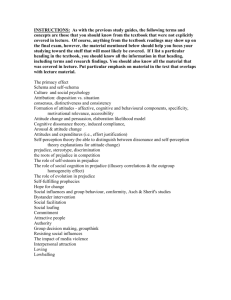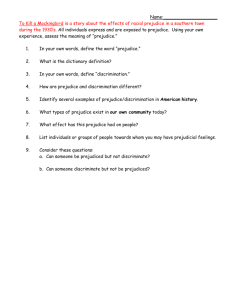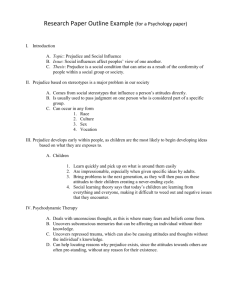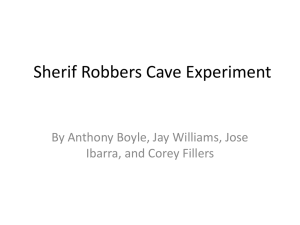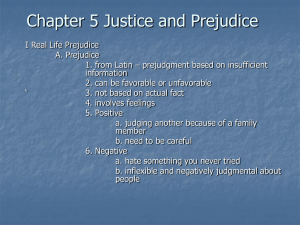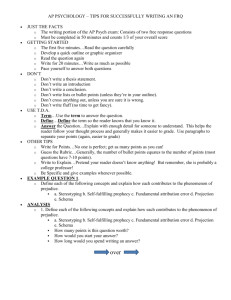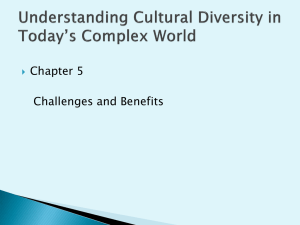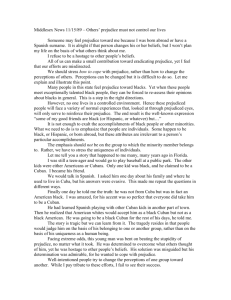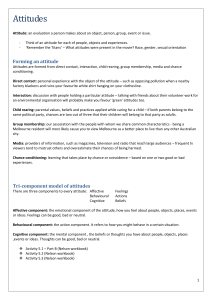The Social Psychology of Prejudice
advertisement
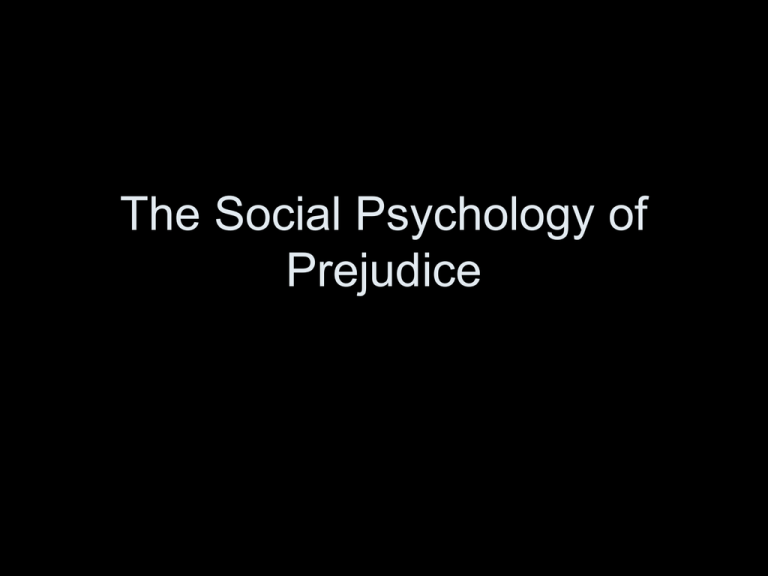
The Social Psychology of Prejudice Prejudice Defined Aronson…a hostile or negative attitude toward a distinguishable group of people based solely on their membership in that group. Blaming the Victim and the Culture of Poverty • What is blaming the victim? – ''justifying inequality by finding defects in the victims of inequality” (William Ryan) • What is a culture of poverty? – A manufactured portrait of poor people as a group, ascribing to them many negative characteristics that can be used to hold them responsible for their economic situation. • Ability to delay gratification-70% vs. 65% • Don’t value education-91% vs. 68% This one idea… …illustrates how firmly entrenched a belief can become, and then how the belief contributes to our cognitive habits that maintain or perpetuate prejudice, discrimination, and unfair treatment of clients. How does prejudice show up in the Human Services Context? • • • • Frequent targets? Frequent perpetrators? Consequences? Causes of? Some context • Culture, diversity, multicultural, crosscultural – What do these words mean? – What are their implications? • Agents and Targets • Internalzied “ism” • Institutionalized “ism” – In what ways do our institutions maintain or perpetuate racism, classism, sexism, ableism, heterosexism, etc.? Link between context and social psychology??? You tell me… Take a minute and come up with an example illustrating the connection between the concept on the left and the population on the right. Think of an example of how the concept may occur in re: to the population Confirmation bias Hindsight bias Self-fulfilling prophecy People with mental disorders People with felonies Attribution error/biases People with chronic illness Poor people Heuristics: representative, availability, attitude People with mobility issues Causes of Prejudice • • • • • Economic and Political Competition Displaced Aggression Maintenance of Self-Image and Status Dispositional Prejudice Prejudice Through Conformity Social Class is Dead. Long Live Social Class! • Write a definition of stereotype threat, compare with the person next to you. • What are the class-based stereotypes cited in the article? • What are others you’re aware of? • Do these affect your clients? If so, how? • How might clients unintentionally be made aware of these stereotypes? Social Class is Dead. Long Live Social Class! 1. 2. 3. 4. 5. What were the hypotheses? What were the independent variables? The dependent variables? What were the conclusions? What questions, hypotheses, next steps are generated by this research? Privilege and Ability • “PWDs must demonstrate that we have merit as humans.” (p. 7) What does the author mean by this? • What are some of the ways “gatekeepers” demonstrate ableism? • How might benevolent ableism show up in our work as human service professionals? • Link the causes of prejudice from the text to prejudice toward people with disabilities. Find one example of the cause you are assigned. Reducing Prejudice • • • • • • Behavior leads to attitude change Clear inevitability leads to attitude change Economic conflict blocks progress Competition can block progress Interdependence helps Equal status familiarity helps Consider SES • What differences exist between SES groups? – Worldview – Locus of Control – Locus of Responsibility – Time orientation • Are these situational or dispositional? Sharon Wachsler, 2007. The Real Quality of Life Issue for People with Disabilities. Journal of Progressive Human Services, 18(2), 7-14. In SocINDEX

